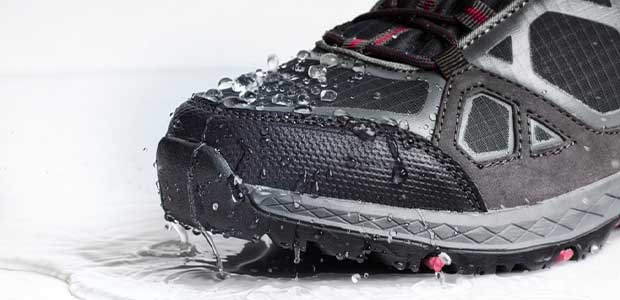
A New Standard in Slip Resistant Safety Footwear
A new ASTM standard could help employees feel safer on their feet.
- By Matt Gould
- Sep 01, 2022
According to the Center for Disease Control, slips, trips and falls are the third most common non-fatal work-related injuries in the United States. Injuries of this magnitude often lead to needed time off for workers, which can lead to delayed business and a decreased workforce. The likelihood of slipping and falling, which results in injury, make slipping accidents in the workplace one of the most dangerous conditions in the workforce today. Slipping on water, ice, oil, gas and more can be detrimental to your employees’ safety—that is why when deciding on safety footwear, slip resistance is one of the most important factors to consider when choosing how one will stay safe on the job site. That said, it’s important to note that oil-resistant does not mean slip-resistant.
Slip resistant safety shoes differ from non-slip rated shoes as their soles are typically made of rubber or similar materials, and their unique tread patterns can better grip wet, slick or oily floors which result in a much more stable work environment. Slip resistant outsoles can be found in a variety of types of safety footwear including shoes or boots that have met-guards, nano toe, steel toe or composite toe caps and varying heights of footwear. There are many different industries that should consider enforcing their employees to wear slip resistant shoes. Some of those industries include food service, police officers, delivery drivers, contractors, healthcare professionals and more.
Prior to July 2021, the U.S. did not have a universal safety standard specification for slip resistance. Safety footwear was simply marked as “slip resistant,” but in June 2021, ASTM 3445-21 was introduced and has since set the standard for slip resistance in safety footwear today. This new safety standard introduces the continued importance of international safety regulations set forth by the ASTM F13 subcommittee on Pedestrian/Walkway Safety and footwear.
The new ASTM standard provides Safety Managers and others alike, a benchmark in which to test footwear to ensure maximum protection for their employees. Footwear that meets this new ASTM standard has been tested for slip in wet and dry conditions and should be a major consideration when determining the correct safety footwear to wear for one's given work environment.
ASTM 3445-21 refers to the performance requirements when evaluating slip resistance performed using the F2913-19 test method and must appear on footwear in which the test has been administered and certified. Passing of this test refers to the coefficient of friction being at 0.40 or above in both the heel and forepart of the footwear. The higher the coefficient of friction, the greater the resistance to slipping, according to Canada’s IRSST. When looking for footwear that has passed this test, look for the footwear to be marked “F3445-21 SR.”
The process of testing the footwear involves mounting the footwear to the testing apparatus at a seven-degree contact angle and then measuring the coefficient of friction by sliding the test surface relative to the footwear at a predetermined speed and vertical load. This allows for reproducible conditions in the testing lab. A shoe that tests at a .8 coefficient of friction in Lab A will also test similarly at Lab B. The accuracy and repeatability will aid manufacturers in improving slip resistant footwear as well as adding consistency in manufacturing.
It should be noted that slip resistant rated footwear has been tested and certified as SR, however lab conditions do not always reflect the flooring surface or contaminants in different environments and should be used alongside other safety programs to keep workers as safe as possible.
There are several guidelines to keep in mind when selecting the right slip-resistant shoe: outsole, tread, insoles, upper, midsole and durability. Some of these elements factor into slip resistance directly (like outsole, midsole and tread), while others (like insoles and upper) focus on fit and comfort for workers on their feet all day long. If slip-resistant footwear does not feel comfortable, people will opt for another style that may not be as safe for their work environment. Therefore, it is recommended that employees try a few different models or styles before purchasing, to see what works best for them.
While slip-resistant shoes offer protection, there can be wear and tear over time. It is important to clean out any tread patterns from potential debris and monitor the condition of the shoe, for when it is in need of potential replacement.
With the new ASTM standard in place, people with safety footwear can now feel safer on the jobsite when working on slick or wet surfaces, knowing that they are wearing safety footwear that has been tested and certified as slip resistant.
REFERENCES
https://www.cdc.gov/niosh/updates/96-119.html
https://www.ishn.com/
https://www.irsst.qc.ca/media/documents/PubIRSST/RF-951.pdf?v=2020-01-22
This article originally appeared in the September 1, 2022 issue of Occupational Health & Safety.